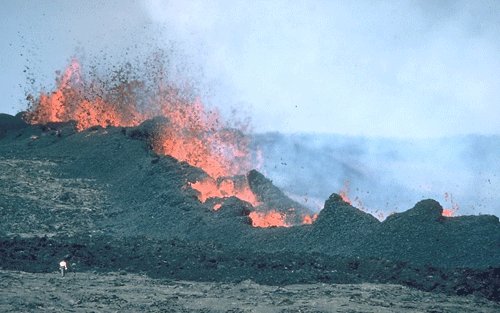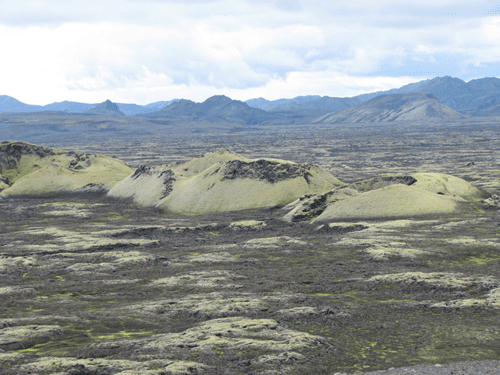Eruptive activity northeast of Laki mountain commenced on July 29, 1783, marked by explosive phreatomagmatic activity. The phreatomagmatic eruption lasted 2-3 days, producing a second tuff cone. Lava flowed both to the south and to the north, ultimately entering the Hverfisfljót River Gorge to form a second flow channel that would drain the lavas produced by the northeast fissures. The lava flow rate reached a maximum of 4 km/day between August 3-7, continuing at a lower rate until the next surge on September 1 (preceded by an earthquake swarm on August 23). Another earthquake swarm on September 26 was accompanied by intense volcanic activity, and both the Skaftá and Hverfisfljót rivers dried up during this time. Another fissure opened October 24-29, delivering a final surge of lava to the Hverfisfljót River Gorge. Effusive eruption continued at a diminished rate until February 7, 1874.

